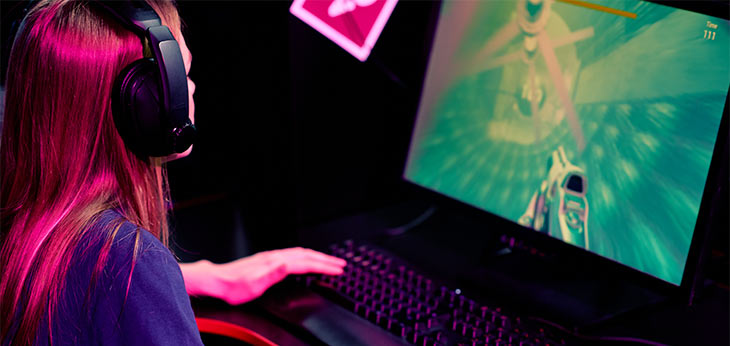The Psychology Behind Colors in Video Game Design
Color has a potent role in various artistic endeavors and commercial pursuits, with its impact on human psychology being exploited by everyone from master painters to marketing maestros.
In the context of video games, color is an especially important tool that can be used in a variety of ways, so here is a deeper dive into its deployment by designers over the years.

Conveying emotion
First and foremost, color is harnessed in the same way as audio effects and music to set the emotional tone for both the game as a whole, as well as individual aspects of the story.
Games which aim to explore narratives that are gritty, realistic and intense will opt for color palettes that reflect this. The grays, greens, browns and reds of almost any entry in the long-running Call of Duty franchise attest to that. Meanwhile a more upbeat game, like Super Mario Odyssey or almost any modern slot found on casino sites, will opt for brighter, more cheery primary colors to convey their mood and overall ethos.
In this way, video games use color to control their audiences’ response in much the same way as movies do. This all ties into very primitive evolutionary instincts that humans have; bright, light scenes mean that threats have nowhere to hide, while dingy and dark areas are more inherently scary. Thus light and color have a symbiotic psychological relationship in interactive entertainment, as in other forms of artistic expression.
Creating a brand identity
While video games are undeniably works of art, they are also products which need to be sold to consumers, and an effective way to help new releases stand out from the crowd is to make sure that they look distinctive.
While not every game achieves this successfully, there are some examples of releases that have made effective use of color to create a brand identity that is appreciable and instantly recognizable at a distance.
Mirror’s Edge and its sequel, subtitled Catalyst, managed to achieve this with flare, using a combination of clean white and bright red to give the world of the game a unique look. Color can make for eye-catching screenshots and impressive trailer videos, both of which are crucial in making sure that audiences are aware of an upcoming release and thus more likely to cough up some cash. Capitalizing on consumer psychology through color is a trick seen in plenty of other games, even if it is also often a side-effect of a title having a strong overarching artistic vision that creates a brand almost by accident.
Focusing attention
One of the main challenges of video game design is conveying to the player their aims and abilities, without having to constantly bombard them with tutorial pop-ups or rely on overlaid way-markers in the HUD to point them in the right direction.

Color is the ideal option for achieving this, as it can be used to draw the eye of the player and give them an easy indication of what aspect of the game world is worth paying attention to and what is merely background ornamentation.
Of course there are myriad approaches to focusing the attention of players using color, ranging from the extremely over to the suitably subtle. Often it is a case of using the shade of a particular surface to single it out from similar surfaces surrounding it, rather than making it entirely different in hue.
Ultimately the psychological application of color in video games is more practical than in almost any other art form, and yet still manages to be immensely satisfying to those who want to just sit back and enjoy the ride.
































































































